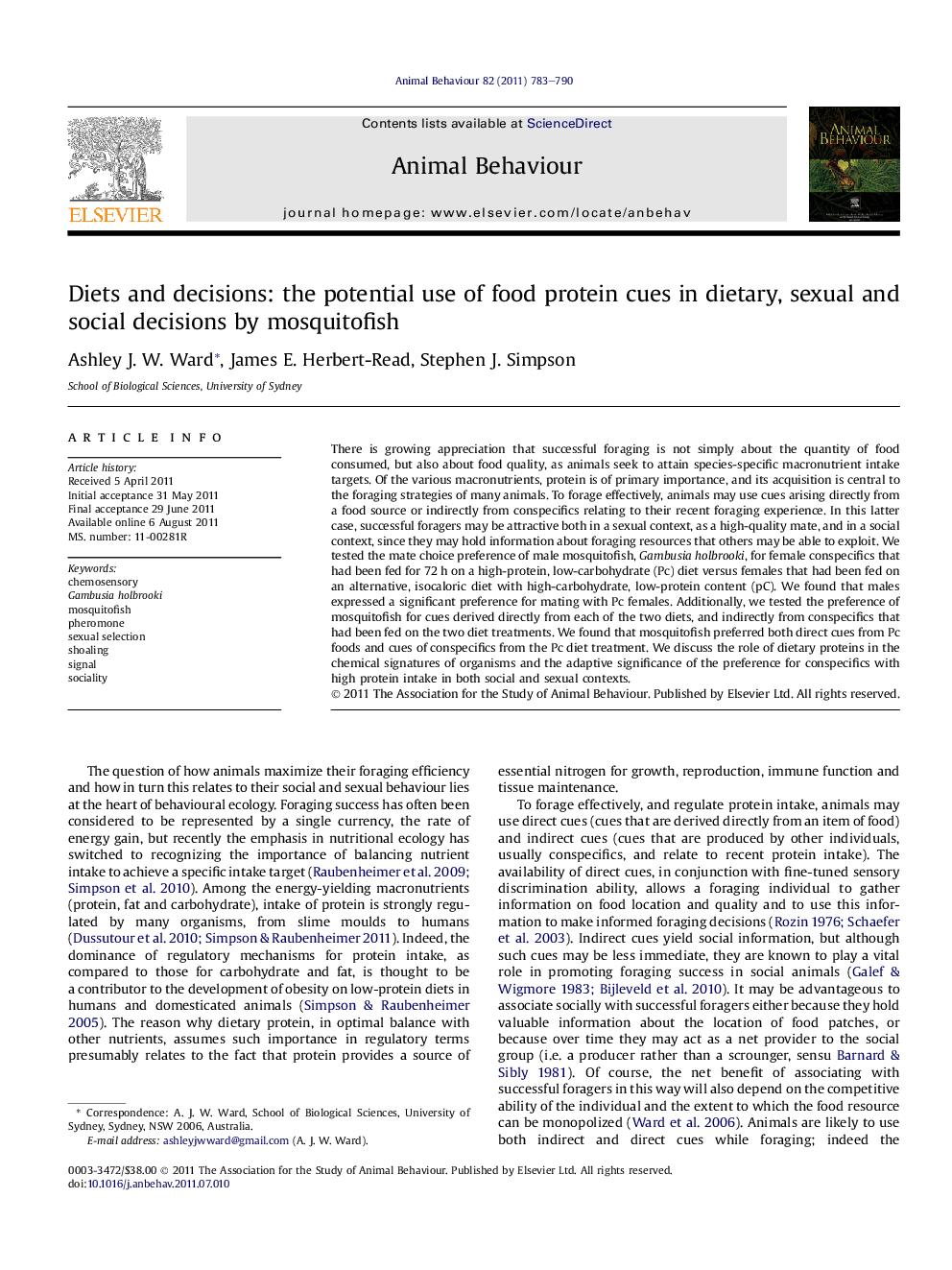| Article ID | Journal | Published Year | Pages | File Type |
|---|---|---|---|---|
| 2416646 | Animal Behaviour | 2011 | 8 Pages |
There is growing appreciation that successful foraging is not simply about the quantity of food consumed, but also about food quality, as animals seek to attain species-specific macronutrient intake targets. Of the various macronutrients, protein is of primary importance, and its acquisition is central to the foraging strategies of many animals. To forage effectively, animals may use cues arising directly from a food source or indirectly from conspecifics relating to their recent foraging experience. In this latter case, successful foragers may be attractive both in a sexual context, as a high-quality mate, and in a social context, since they may hold information about foraging resources that others may be able to exploit. We tested the mate choice preference of male mosquitofish, Gambusia holbrooki, for female conspecifics that had been fed for 72 h on a high-protein, low-carbohydrate (Pc) diet versus females that had been fed on an alternative, isocaloric diet with high-carbohydrate, low-protein content (pC). We found that males expressed a significant preference for mating with Pc females. Additionally, we tested the preference of mosquitofish for cues derived directly from each of the two diets, and indirectly from conspecifics that had been fed on the two diet treatments. We found that mosquitofish preferred both direct cues from Pc foods and cues of conspecifics from the Pc diet treatment. We discuss the role of dietary proteins in the chemical signatures of organisms and the adaptive significance of the preference for conspecifics with high protein intake in both social and sexual contexts.
► Protein is a crucial macronutrient in the diet of all animals. ► We examine the use of protein cues in fish decision-making. ► Mosquitofish prefer chemical cues from a high over a low protein source. ► They also prefer chemical cues of conspecifics that have eaten a high protein diet. ► Male mosquitofish prefer to mate with females that have eaten a high protein diet.
